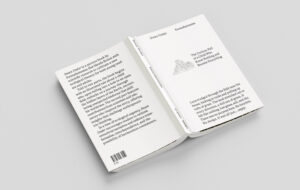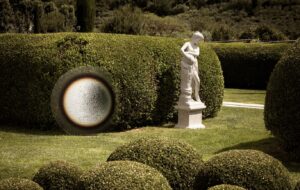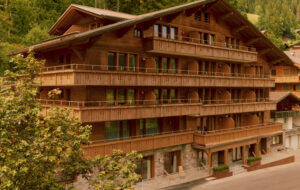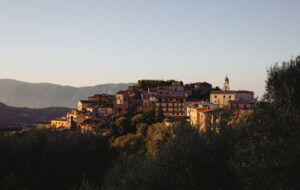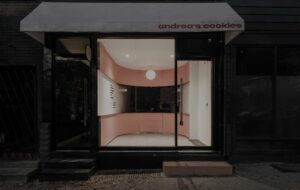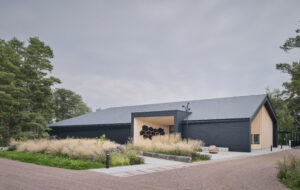


words Gayle Markovitz
Architectural exhibitions have become hollow, detached and lacking in curatorial drive.
My first trip to Venice was a four-day trawl around the 1999 art biennale. Feeling over-indulged by the seemingly never-ending art fest, I remember escaping to a beautiful square next to the Ospedale, intending to seek refuge inside the adjacent church. While waiting for the 3pm opening time, I witnessed a daily outing for the psychiatric patients, behaving much like a troop of over-ambitious performance artists, and regular drop-offs by the water-bound ambulance ferrying the sick and injured around the waterways of this implausible city. In a state of emotional fervour, I sipped my café latte and wondered at the improbability of life, as the extraordinary images of all the art and all of Venice’s eccentricity merged. It was a profound awakening.
My second experience of Venice was three years later: the eighth international architecture biennale’s much-hyped and widely attended vernissage, “Next”, curated by Deyan Sudjic. This time, there was no such spiritual event in store for me. At first I felt a cool detachment from the volumes of work in the stylish displays, but I soon descended into information overload. Around me whirled an architectural hall of fame, the familiar faces, more often seen on the covers of copies of El Croquis, seemed to belong to a waxworks museum. “Next” was an exhibition about the buildings that we will see constructed over the next few years: architecture in the making. This is a clear, unfussy objective that was proficiently accomplished. But the exhibition signified rather than dignified the work on display.
I would argue that the primary function of an exhibition is to communicate a message that is culturally, anthropologically, psychologically or sociologically profound. Umberto Eco’s semiotic reading of architecture as a mode of mass communication explains how exhibitions “explode the dual communicative nature” of architecture, sacrificing denotation of function to very widespread connotation: “The basic ideology of an exposition is that the packaging is more important than the product, meaning that the building and the objects in it should communicate the value of a culture, the image of a civilisation.” Experiencing architecture as a mode of communication is extremely complex, because it has so many different layers of meaning.
Zaha Hadid and Patrik Schumacher’s “Latent Utopias” focused precisely on future and imagined needs. Exhibited as part of the Graz Festival of Culture 2003, the show was curated by Hadid and Schumacher, and contained work by a range of architects and designers including Asymptote, Branson Coates, COOP Himmelb(l)au and Softroom. This was an unusual departure for two practising architects to curate a group show. It had every reason to be self-reflective and architecturally obtuse, considering that architects are notoriously bad at communicating to anyone else, and yet the strength of its message, although complex, provides a fascinating insight to the possibilities for the built environment by the very people who are contributing to its morphosis.
“Latent Utopias” was a testing ground for the spatial effect enabled by technological experimentation. The format of the exhibition was highly interactive and experiential. It was a sequence of surprising and disorienting installations and environments that challenged the needs that contemporary society raises for architecture. It succeeded because the exhibition format was essential to its very conception. Hadid and Schumacher consider exhibitions a vital part of the process of “publicly teasing out the latent social content of the new, strange, abstract spaces that are on the drawing boards of the current architectural avant-garde(s)”. In contrast to architects, artists often develop work with the objective of exhibiting it central to its evolution. The exhibition is often the curatorial context, in the same way that a building would need to relate to its site.
An exhibition about architecture rarely achieves the kind of emotional impact that a building, in situ, might provoke. So here we have a fundamental problem: most architects who are heavily involved in the business of building find it difficult to conceive of the exhibition as anything other than a foretaste of the thing to come.
Architecture is increasingly incorporated into gallery programmes. Even traditionally art-specific venues are exhibiting it. The Whitechapel Gallery’s recent return to architecture with the Mies van der Rohe show (there were shows in the past: “This is Tomorrow”, Nicholas Hawksmoor, etc) is the result of the personal passions of the director, Iwona Blazwick, but also a reflection of the fact that few other major venues are doing it. Architecture is seen as an important current influence in contemporary art. The Camden Art Centre’s Atelier van Lieshout exhibition last year was a refreshing take on structure as sculpture, with its construction of beautiful pods for alternative living occupying the three gallery spaces.
Then there are the architecture “galleries” that provide a steady stream of initiatives to advance understanding of architecture. The RIBA is setting up a foundation, which will be the cultural arm of the institute. The cultural agenda has always existed, but this is an important attempt to be more strategic in its role of disseminating information to wide audiences. Organisations such as Wordsearch and the Architecture Foundation also work diligently at putting architecture into the public arena. The AF’s “Calling London” programme was a brave and inspiring attempt to engage a diverse cross-section of artists, architects, writers and visionaries in an effort to understand the spatial experience of London, and imagine new possibilities for the metropolitan environment. The gallery was converted into a bar and lounging area, courtesy of Ben Kelly Design, and became a temporary architectural talking shop.
Architecture is more press friendly than ever before. Tate Modern received as much, if not more, coverage related to Herzog & de Meuron’s work as the galleries themselves. Also, it is more common for the expertise of architects to be called upon within the framework of the gallery space. Where once an in-house exhibition design team may have dominated such work, architects are now frequently commissioned to design art exhibitions, indicating a confidence in their abilities to understand and manipulate gallery space.
MacCormac Jamieson Prichard’s design of Tate’s “Surrealism: Desire Unbound” exhibition gave visitors a multi-sensual experience through a myriad of colour and light-dominated chambers. The scheme imaginatively called into question the convention of the white cube that denies an interpretive conversation between the gallery environment and the exhibits themselves. David Adjaye’s work with Chris Ofili at the Victoria Miro Gallery transformed the white space into a spiritual nirvana: the air thick with the smell of timber; and a dimly lit corridor leading to the church-like, cleanly symmetrical vestibule housing Ofili’s 12 Monkeys.
So it appears that architects are quite at home with the exhibition format, and this should be reason enough for getting it right – and yet a host of rather depressing factors can explain why it (often) goes wrong. Unlike our American counterparts, we have no formal tradition of curating architecture in the UK. Moma’s Department of Architecture & Design (Tate doesn’t have one) is as fundamental to the reputation and composition of the organisation as the fine art departments. Its chief architecture curator, Terence Riley, is revered in both art and architecture circles with equal measure.
Herzog & de Meuron’s astonishing “Archaeology of the Mind” currently showing at the Canadian Centre for Architecture in Montreal is the result of a collaboration with curator Philip Ursprung. The show alludes to the narrative structure of a 19th-century museum, making it seem as if some future archaeologist had set about organising and contextualising Herzog & de Meuron’s vast archive. The result is a kind of imaginary museum within the CCA, where visitors encounter an exhaustive display of the objects that define what could be described as the “Herzog & de Meuron condition”. There are hundreds of models of varying scale, books, toys, photographs, fossils and significant works of contemporary art, including pieces by Jeff Wall, Bernd and Hilla Becher, Donald Judd and Gerhard Richter.
This exhibition is not a monographic trawl through the works of Herzog & de Meuron (they famously avoid exhibiting their work in this fashion), rather it is an interesting treatment of the conditions that lead to the architecture, and a fascinating disorganisation of the exhibition device. It has an intellectual and spiritual integrity in its own right, and champions the medium of the exhibition while also calling it into question. Clearly, the show relies on the kind of curatorial (rather than architectural) expertise often lacking in many other architecture exhibitions.
But we also seem to be dogged by an unfortunate inability to rethink the conventions of presenting work to clients. Architects are schooled in the vernacular of the architectural competition, which dictates that there must be a number of panels and a model to communicate a design. While the format works for potential clients, who have an understanding of the context, it does not work particularly well for a wider audience. Architectural models can be very beautiful and panels extremely informative, but in themselves and by themselves, they communicate very little.
Finally, budgetary constraints are often cited as another reason for unimaginative exhibitions. Of course, it is not always possible to create vast, installation-type shows that recreate a sense of a space on a shoestring budget, and slapping a few pictures on a wall is often seen as the affordable alternative. Despite this, some of the most poignant shows I’ve seen have been incredibly simple. The RIBA’s Oscar Niemeyer exhibition in 1998 was a collection of photographs, books and texts, placed in cabinets in the centre of the galleries like a personal archive, and a series of panels featured sketches and fragments of quotations by Niemeyer. The show was informative and moving. There was no need to build an ersatz Ministry of Education in Rio within the galleries for visitors to absorb a sense of the man’s work.
Most worrying, however, is the way in which exhibitions are conceived as PR stunts, where there is too little intellectual or narrative rigour put into play. If the objective of a show is to pull in the punters no matter what the depth of experience you offer them, then the result will be hollow. The “Hardcore!” exhibition at the RIBA last year was a valiant attempt to challenge the many misconceptions about concrete, and ambitiously poured a concrete floor in the RIBA’s galleries. The hype was fantastic, but the result disappointing and shallow. It was a monotonous display of an endless list of just about everything that has been made of concrete, treating its historical context and contemporary use with utter banality. (I found comic relief in the description of the roof of Hadid’s tram station in Strasbourg as “a solid concrete structure”, knowing that there is, in fact, more steel in the roof than there is concrete.)
Worse still, as technology becomes more amenable, many shows attempt to gratify us instantly with interactive tricks that end up as less-fun versions of computer games. I am no Luddite, but like all communication devices, the use of technology needs justification and sensitivity to its context. Not all architecture has the sense of movement and kinetic energy that lends itself well to the “fly-through”. I felt irritated by the animations in the Mies van der Rohe exhibition. If the exhibition had recreated the Barcelona Pavilion to scale, the last thing I’d have done would be to don a pair of rollerblades and whiz through it at speed.
In contrast, Zaha Hadid’s recent major retrospective exhibition in Rome had a series of large, animated projections that successfully evoked the sense of movement that is so integral to her buildings. This was an important adjunct to the many ways in which she investigates three-dimensional space. Whether it is via a painting, computer rendering, sketch, model, installation finished building or animation, her work is all about the process of spatial analysis. It is as if she makes no distinction between the different media, but rather seeks to communicate a specific “condition”, and it is this focus that makes her exhibition work successful and her use of computer technology forgivable and appropriate.
What and who, then, are these exhibitions for? It seems to me that there are a number of fundamental motivations: to provide a public forum in which to absorb information about architecture; to provoke debate about architecture, or a specific aspect of architecture; to present a narrative about spatial experience that has intellectual integrity; and finally, to move and inspire. The most successful shows often call on the expertise of an independent, professional architecture curator, but more importantly, they embrace the idea of the exhibition as an essential communication of the desires and motivations that forge our understanding and shaping of the built environment. Exhibitions about contemporary architecture should enable us to imagine what could or might be.


